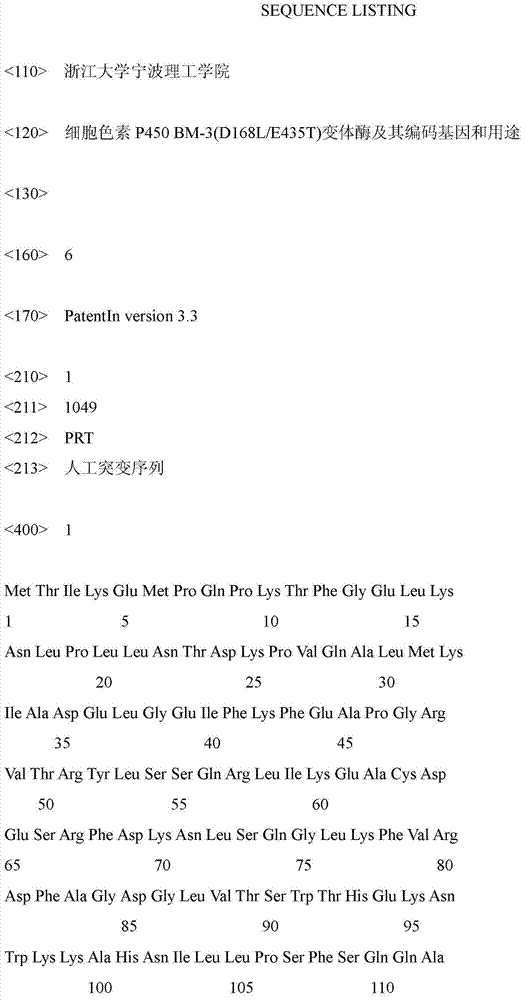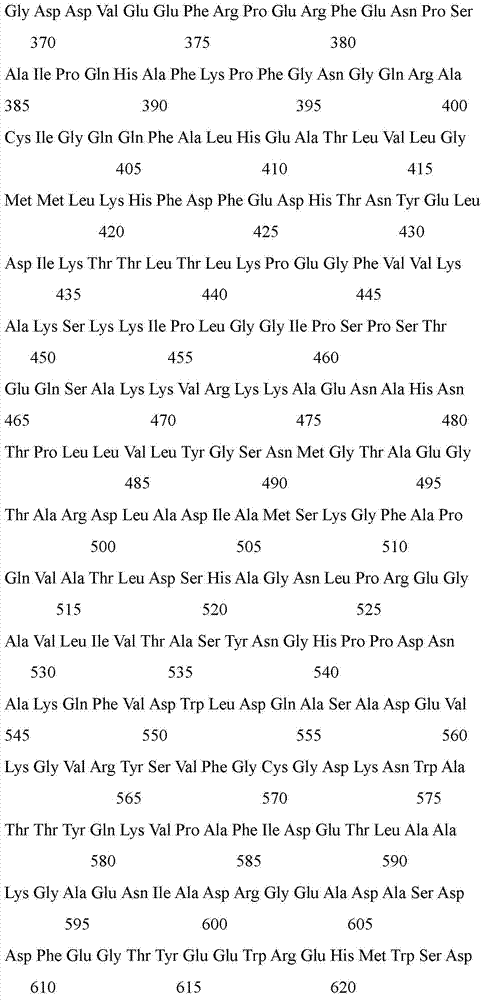Cytochrome P450BM-3 (D168L/E435T) variant enzyme as well as coding genes and application thereof
A cytochrome and variant technology, applied in the field of variant enzymes, can solve the problems of low efficiency and low affinity of indigo
- Summary
- Abstract
- Description
- Claims
- Application Information
AI Technical Summary
Problems solved by technology
Method used
Image
Examples
Embodiment Construction
[0020] 1. Plasmid pET-28a(+)-P450BM-3(F87V / A74G / L 188Q)
[0021] The plasmid pET-28a(+)-P450BM-3(F87V / A74G / L188Q) used in the present invention was donated by Professor R.D.Schmid of the University of Stuttgart, Germany. It is a variant of cytochrome P450 BM-3(F87V / A74G / L188Q) The enzyme gene was inserted downstream of the promoter of the original vector pET-28a (+), and the sequence of the mutant gene and the structure of the recombinant plasmid had been recorded in Chinese Patent 00810943.5, Chinese Patent 200610052588.0 and literature ("Directed Evolution of the Fatty-Acid Hydroxylase P450 BM-3 into an Indole-Hydroxylating Catalyst. Chemistry-A European Journal. 2000, 6(9):1531-1536"). The construction method of the recombinant plasmid can refer to the existing general plasmid construction method. The purpose of using the plasmid is to obtain the cytochrome P450BM-3 (F87V / A74G / L188Q) variant enzyme gene, and there is no specific requirement for the carrier.
[0022] 2. Des...
PUM
| Property | Measurement | Unit |
|---|---|---|
| catalytic efficiency | aaaaa | aaaaa |
Abstract
Description
Claims
Application Information
 Login to View More
Login to View More - R&D
- Intellectual Property
- Life Sciences
- Materials
- Tech Scout
- Unparalleled Data Quality
- Higher Quality Content
- 60% Fewer Hallucinations
Browse by: Latest US Patents, China's latest patents, Technical Efficacy Thesaurus, Application Domain, Technology Topic, Popular Technical Reports.
© 2025 PatSnap. All rights reserved.Legal|Privacy policy|Modern Slavery Act Transparency Statement|Sitemap|About US| Contact US: help@patsnap.com



